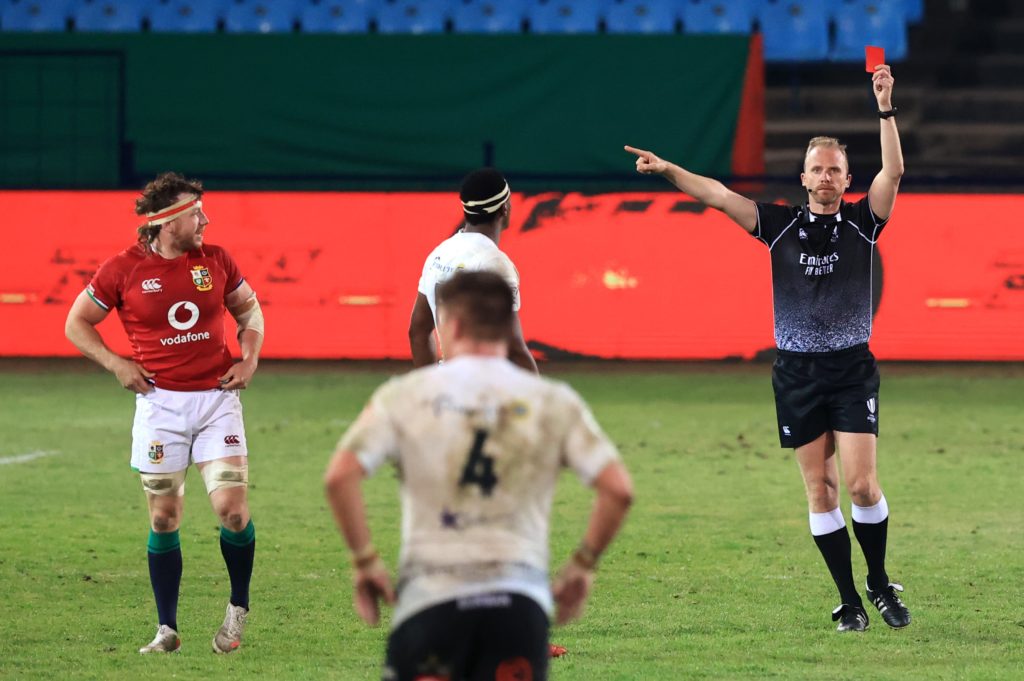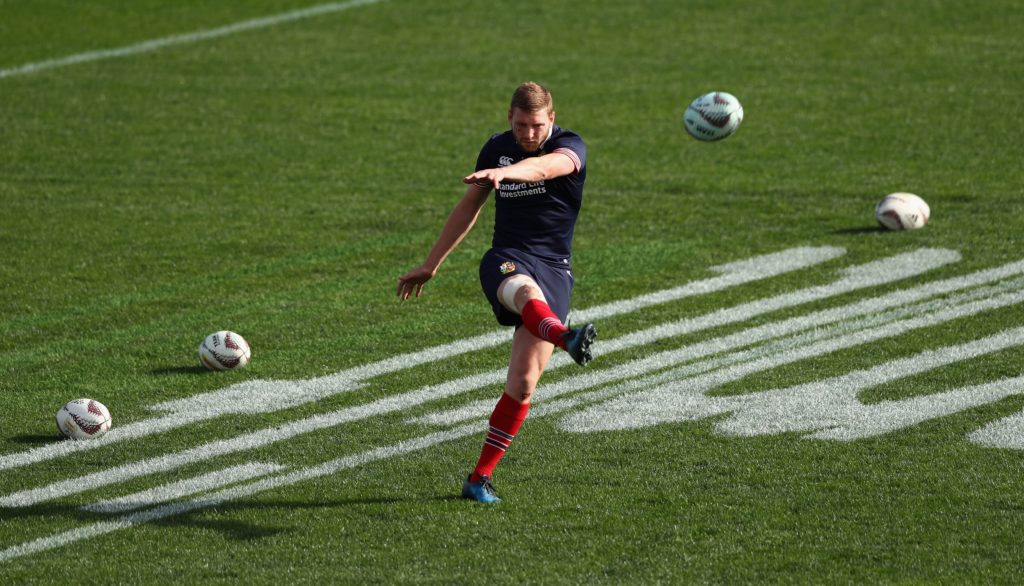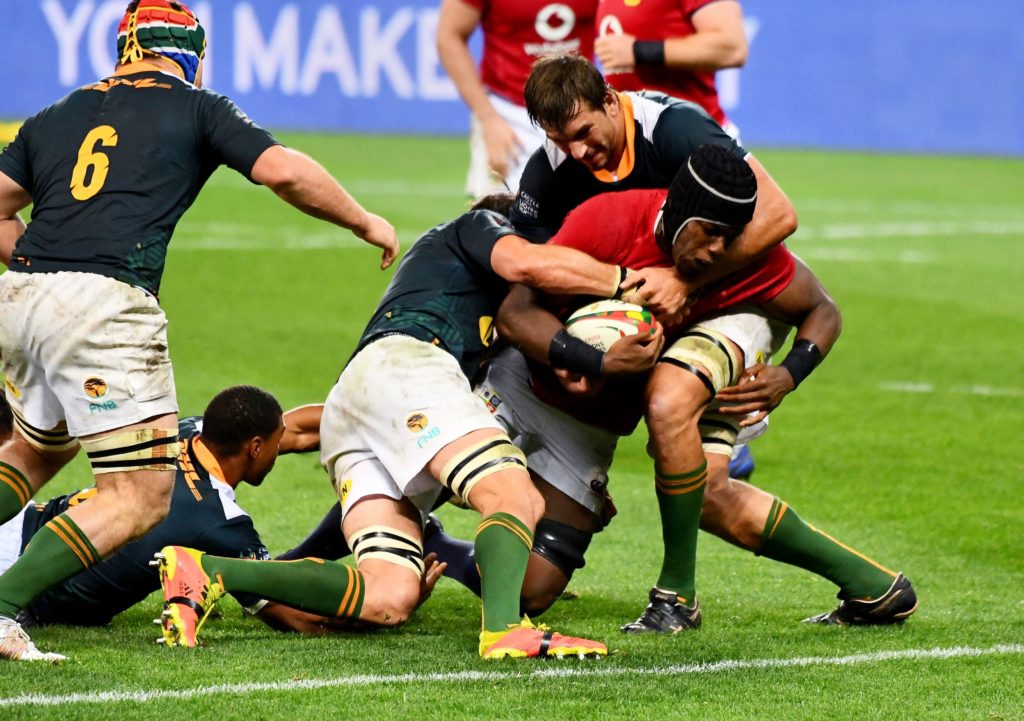The world of rugby has reached that time of year again. Fans around the world start to look bewildered at their screens, professional referees lose sleep keeping up with which competitions are playing which rules, and amateur referees can take their pick of which new laws they like the look of. The rugby lawbook is being adapted by the powers-that-be – and time will tell how successful it will be.
In this year’s Super Rugby and Rugby Championship competitions (as well as last year’s Super Rugby AU), three notable new laws have been added. One is the 50/22 kick – if a player kicks a ball from their own half and it bounces out of play in the opposition 22, the kicking team get the throw-in. Another is the goal-line drop-out – if a player is held up in-goal or a ball is grounded in-goal by a defending player, the defensive team get a free shot at clearing the ball from their own goal-line with a drop-kick. The final major change is that following a red card (you know, the sort of card that’s usually given to discourage dangerous play), a team can bring on a new player and go back up to 15 players after 20 minutes.

There are a lot of recent law variations that I’ve loved. Tapping the ball before kicking it out for full-time? Yup, makes a lot of sense. Straight seven points for a penalty try? Yes, that’s perfect. I can’t quite say the same of these, though.
Let’s talk about the 50/22 law. I understand that World Rugby had good reason to trial this law and show some faith in it. We are yet to see it have an impact in the Rugby Championship but, granted, it will probably have an eventual influence on defences. It’s only natural that the threat of long kicks leading to attacking opportunities will lead to more space appearing somewhere. The overriding question is: Is this necessary?
Exciting rugby’ doesn’t always equate to tries, otherwise Sevens would be the more popular form of the sport. ‘Exciting rugby’ equates to intensity, small margins, drama and high skill levels.
Rugby always goes through fluctuations of attack and defence being on top. We are past the days of a fly-half being able to waltz past a flanker merely on the basis of having good feet, but the game’s top attack coaches will always find new ways to innovate and find space. At some point in the distant past, a coach ran a screen play for the first time ever and it quickly caught on as the best way to find space.
Does the game really need ‘improving’? Do we need World Rugby to do attack coaches’ jobs for them?
I will concede, we’ve all watched Edinburgh vs Connacht snorefests on Sunday afternoons in which both teams are trying to win the territorial battle but not achieving much. But there is nothing wrong with kicking rugby when it is done well.

‘Exciting rugby’ doesn’t always equate to tries, otherwise Sevens would be the more popular form of the sport. ‘Exciting rugby’ equates to intensity, small margins, drama and high skill levels. Tries are a rich currency – and it should be the job of the players and coaches to figure out how to find them. The 50/22 alone won’t cheapen tries as a concept, but if World Rugby keep creating laws to make tries more common, we as spectators will begin to take attacking rugby for granted.
This law is, of course, inspired by rugby league’s 40/20 kick. Rugby league is a sport designed to have lots of tries – the Super League’s top three tryscorers sit on 247, 209 and 199 tries respectively, compared to the Gallagher Premierships 92, 90 and 89. Both sports require insanely high skill levels for totally different purposes. Rugby union ought to value the skills which create Test-match intensity as highly as those that generate tries.
But anyway, these rules have been passed for the time being, so let’s get on with them and think about how they will impact the game. How will these be exploited by the smartest coaches in the game?
Exploiting the goal-line drop-out will be pretty straightforward with the correct personnel. In theory, any time an attacker carries the ball high anywhere near the opponent’s line, the opposition could pile in, keep them off the ground, drag the ball carrier over their line and be rewarded with a free opportunity to clear the ball.

Naturally, this risks a) the player actually grounding the ball, and b) tying more players in towards the ball. But, if executed correctly, carrying the ball high will be a criminal offence within six months. If I, an amateur scrum-half, can think of a potential way to exploit this, imagine what the game’s leading defence coaches will do. It is by no means a bad law, but it has the potential to become arbitrary within months. With the prior ruling of a ‘held-up’ ball leading to an attacking 5m scrum, the small matter of not conceding a try feels like the perfect reward for good defence.
The logical next question is: Who will these laws benefit? Referees rewarding players who can hold up their opponents is bound to benefit the likes of Maro Itoje, Eben Etzebeth and Franco Mostert – big back-five forwards who can blend strong tackling, impeccable mauling and the ability to attack the ball.
One law has been introduced to encourage wider attack and another has been made to reward strong defence. Maybe I’m misreading the room, but there feels a certain irony to that.
The 50/22 will largely benefit No 10s who love to drop to the backfield. Fly-halves ranging from Handré Pollard to Finn Russell will love this. Kicks that will bounce all the way will vary from long, booming punts (like Anthony Bouthier’s 95m belter against England) to provocative, low chips (like Rob Kearney’s successful 50/22, which constantly remained low to the ground). We could see players intentionally kicking low around the halfway line and risking being charged down, with the intention of sending a difficult kick for a winger to field. The intention is to send the ball over the touchline as quickly as possible, giving the backfield little opportunity to either catch or block the ball.
Now that the middle third of the pitch is the only area of the field without advanced kicking restrictions in place (i.e. kicking out on the full is okay inside your own 22 and kicking into the opposition’s 22 grants you a throw-in), it may take some time for teams to adapt to new kicking strategies. While it largely feels like World Rugby are trying to turn the game into rugby league and generate more tries, hopefully this law generates a few smiles with some cheeky, tactile kicks into the opponents’ 22.
Time will tell whether these laws will improve the game. One law has been introduced to encourage wider attack and another has been made to reward strong defence. Maybe I’m misreading the room, but there feels a certain irony to that. Hopefully these do, somehow, make the great game even more entertaining than it already is but, for a lot of fans, these will take some getting used to.
More stories from Will Owen
If you’ve enjoyed this article, please share it with friends or on social media. We rely solely on new subscribers to fund high-quality journalism and appreciate you sharing this so we can continue to grow, produce more quality content and support our writers.


Comments
Join free and tell us what you really think!
Sign up for free